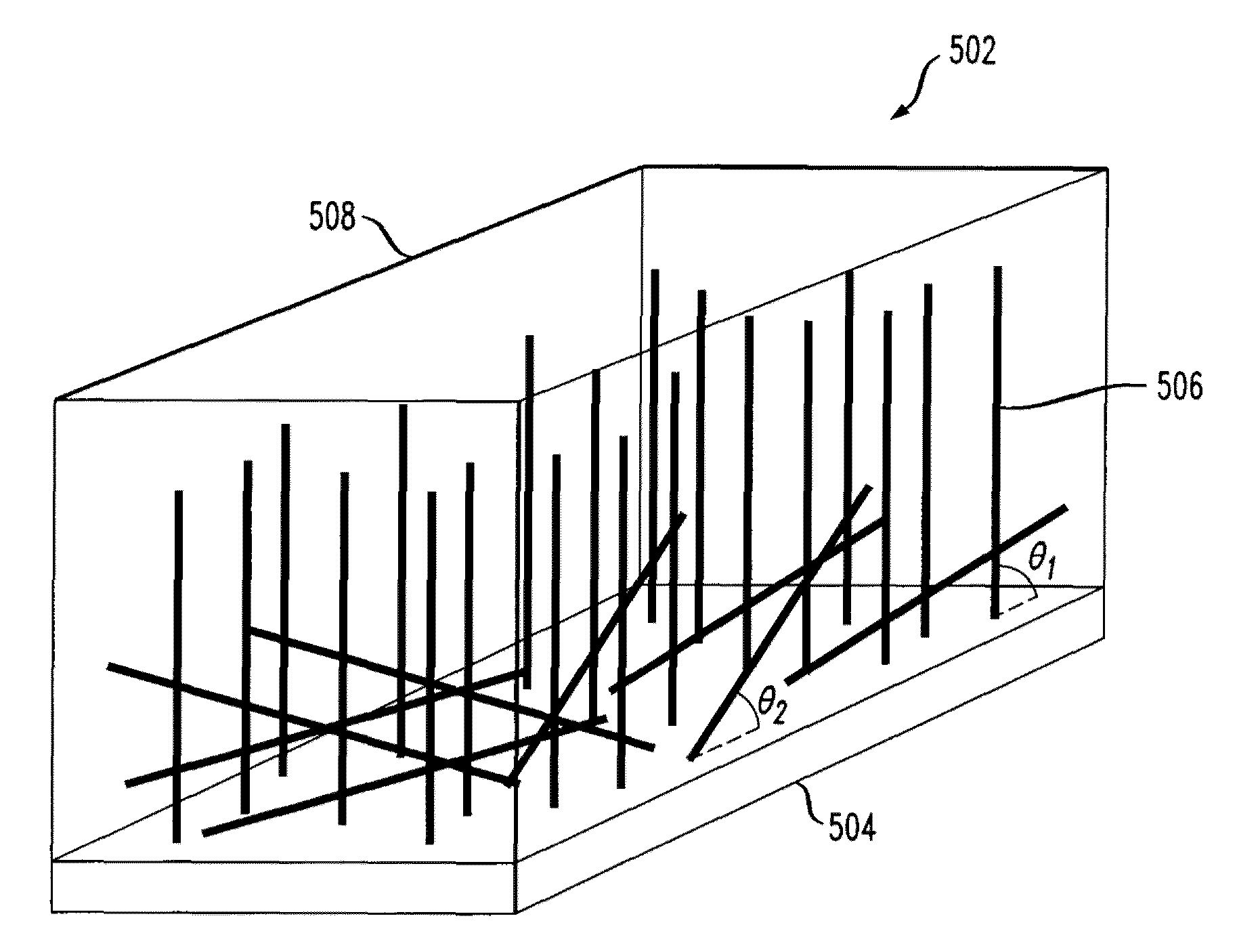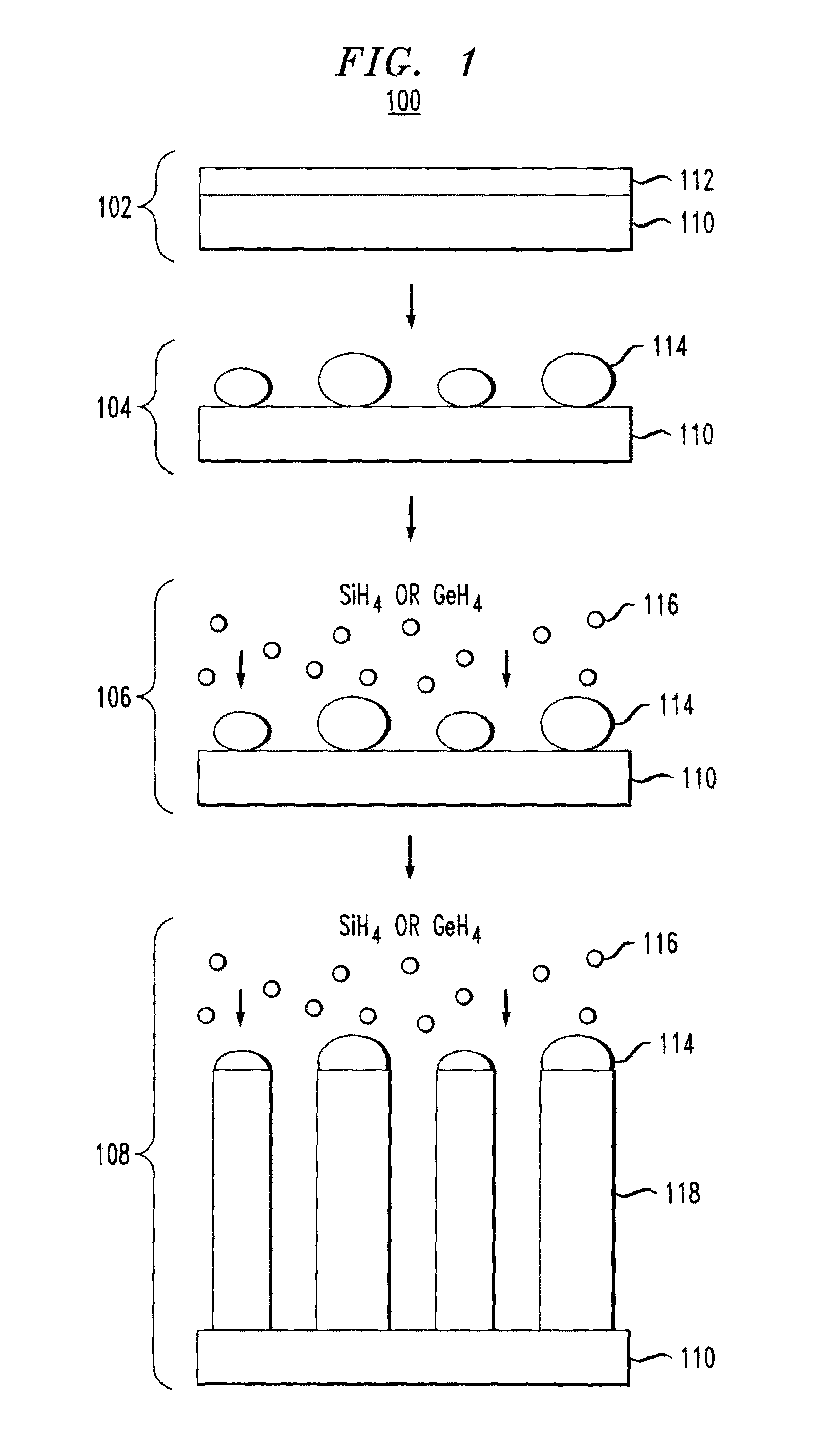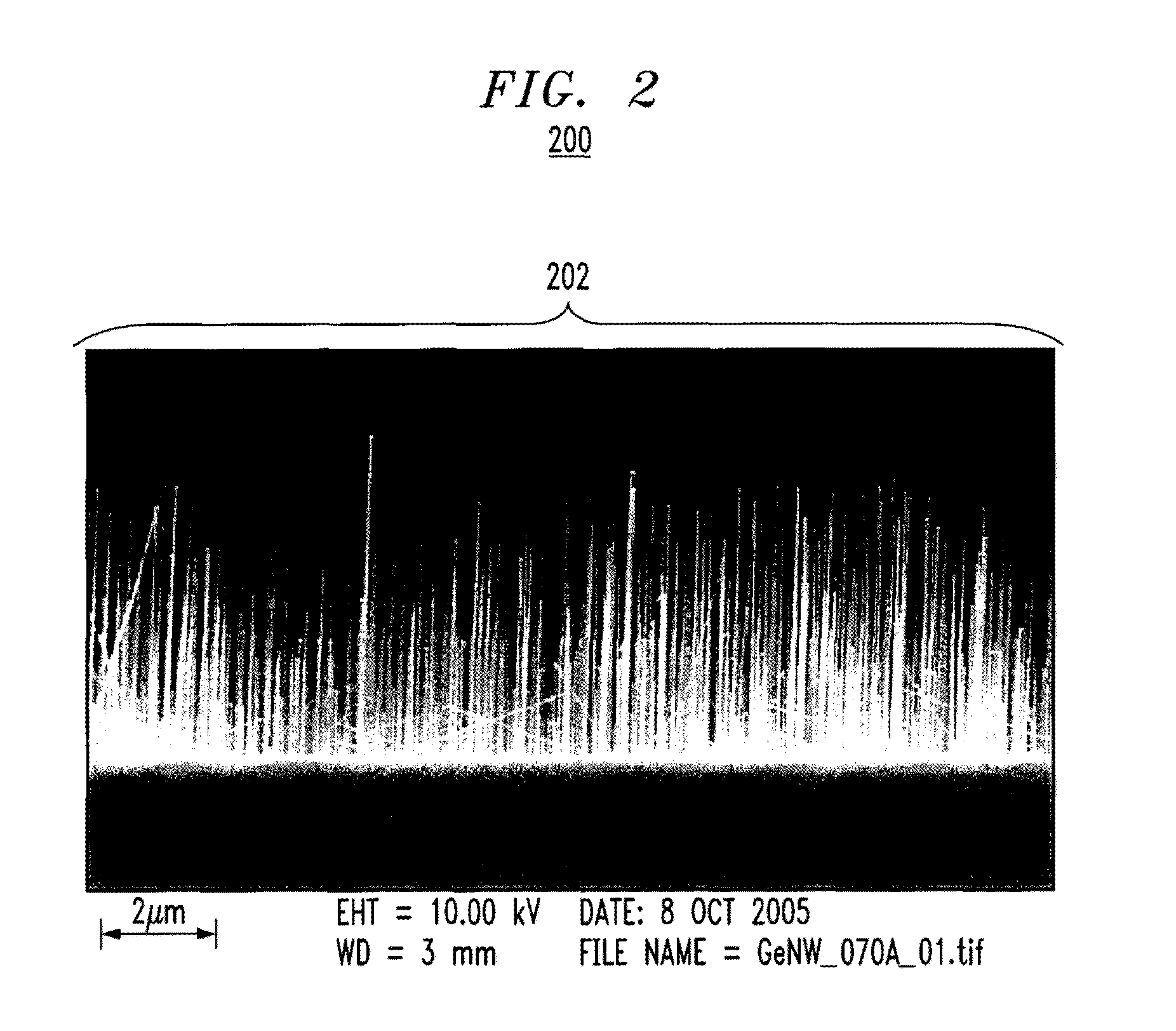Techniques for Use of Nanotechnology in Photovoltaics
- Summary
- Abstract
- Description
- Claims
- Application Information
AI Technical Summary
Problems solved by technology
Method used
Image
Examples
Embodiment Construction
[0017]FIG. 1 is a diagram illustrating exemplary methodology 100 for growing a nanowire forest. The term “nanowire forest,” as used herein, refers to a plurality of nanowires attached to a substrate. As will be described in detail below, the growth of the nanowire forest is conducted in a chemical vapor environment.
[0018]Nanowires are highly-anisotropic, rod-like crystals with diameters d of between about ten nanometers (nm) and about 70 nm and lengths L of between about 0.1 micrometers (μm) and about 100 μm. Due to the nanowires having large L to d ratios, the surface area of the substrate is increased by a factor (4L / d)f, wherein f denotes the fraction of the substrate area covered by nanowires. By way of example only, for a five percent substrate areal coverage, nanowires of diameter d=40 nm and length L=five μm will provide a surface area that is 25 times greater than that of the substrate alone.
[0019]While the present description is directed to nanowires being a preferred nanos...
PUM
 Login to View More
Login to View More Abstract
Description
Claims
Application Information
 Login to View More
Login to View More - R&D
- Intellectual Property
- Life Sciences
- Materials
- Tech Scout
- Unparalleled Data Quality
- Higher Quality Content
- 60% Fewer Hallucinations
Browse by: Latest US Patents, China's latest patents, Technical Efficacy Thesaurus, Application Domain, Technology Topic, Popular Technical Reports.
© 2025 PatSnap. All rights reserved.Legal|Privacy policy|Modern Slavery Act Transparency Statement|Sitemap|About US| Contact US: help@patsnap.com



